It was only two years ago that JWST’s first science images were released.
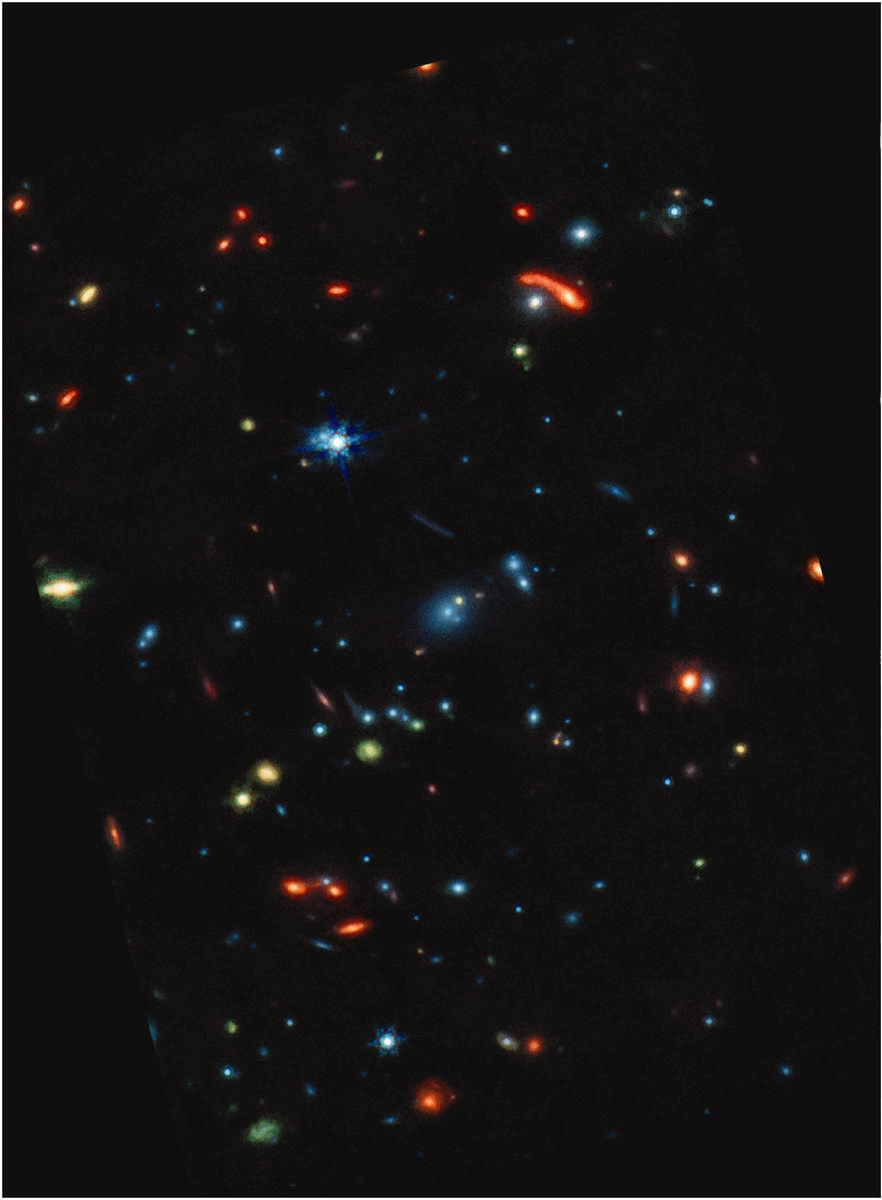
This view showcases the difference between the JWST’s NIRCam and MIRI views, with NIRCam’s being far sharper and revealing more objects. The MIRI view reveals dusty details that no other wavelength can, however, including the abundance and composition of dust inside, which relates to a galaxy’s star-forming and life-forming potentials. In the MIRI view, red = gas-rich; blue = gas-poor (but still present); green = organic molecules, especially polycyclic aromatic hydrocarbons.
They combined high resolution with unprecedented sensitivity in infrared light.
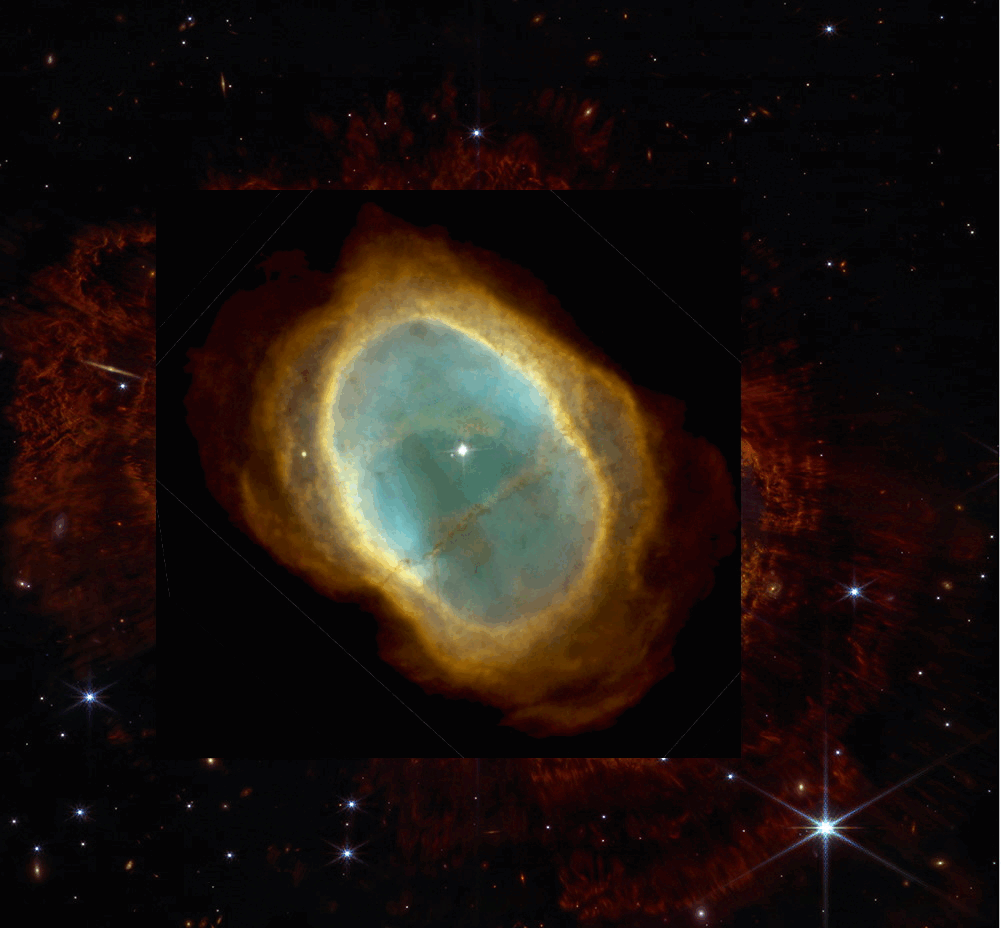
Overlaid with (older) Hubble data, the JWST NIRCam image of the Southern Ring Nebula is clearly superior in a variety of ways: resolution, the details revealed, the extent of the outer gas, etc. It truly is a spectacular reveal of how stars like the Sun end their lives, as well as how, very slightly, the nebula has expanded in between the acquisition of the Hubble and JWST images.
Many surprises abounded early on.
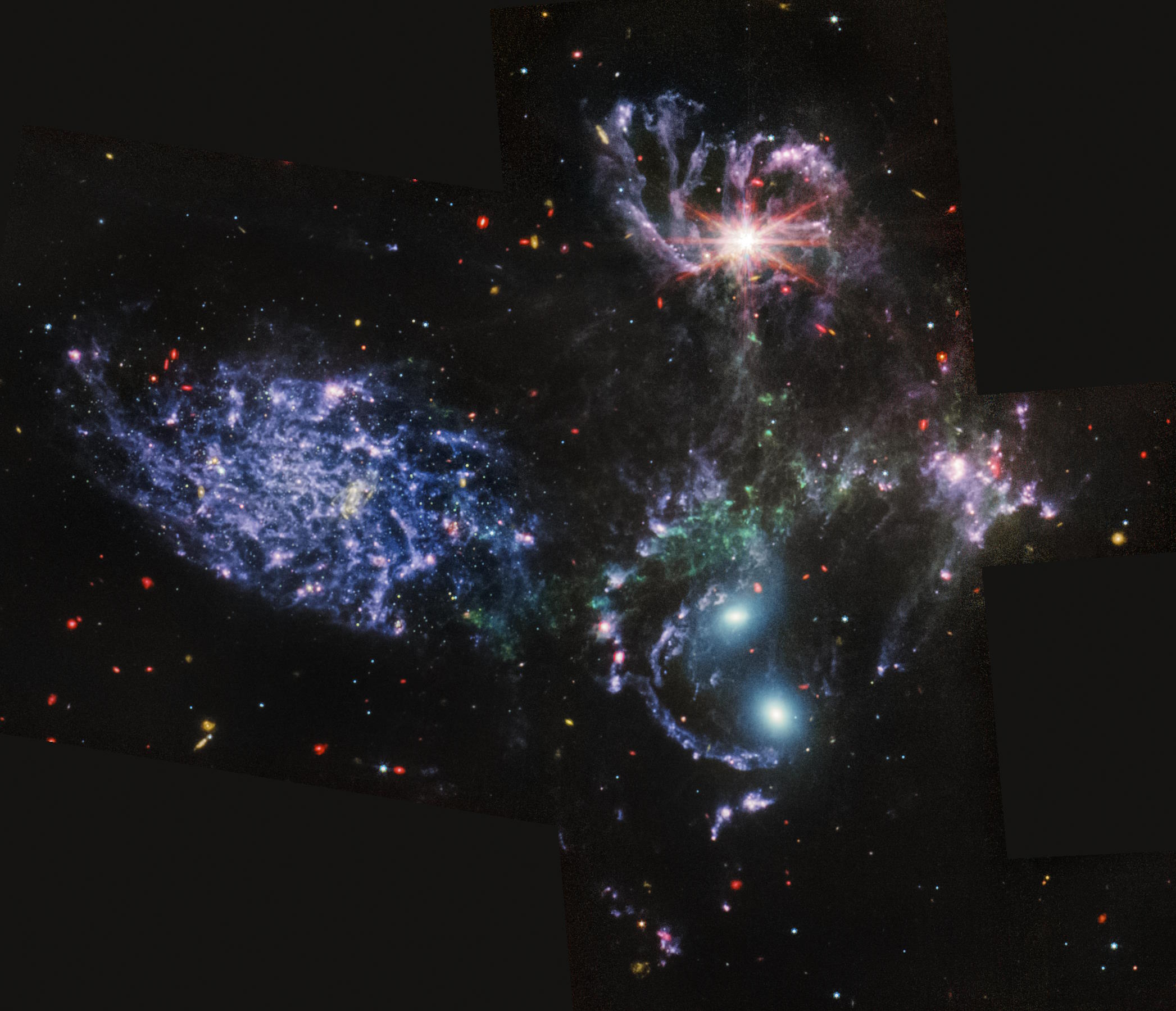
This image is the first mid-infrared image of Stephan’s Quintet ever taken by the James Webb Space Telescope. The galaxy at the topmost-right of the image displays a brilliant spiky pattern: evidence of a supermassive black hole that had never been revealed prior.
New features within planetary systems were discovered.
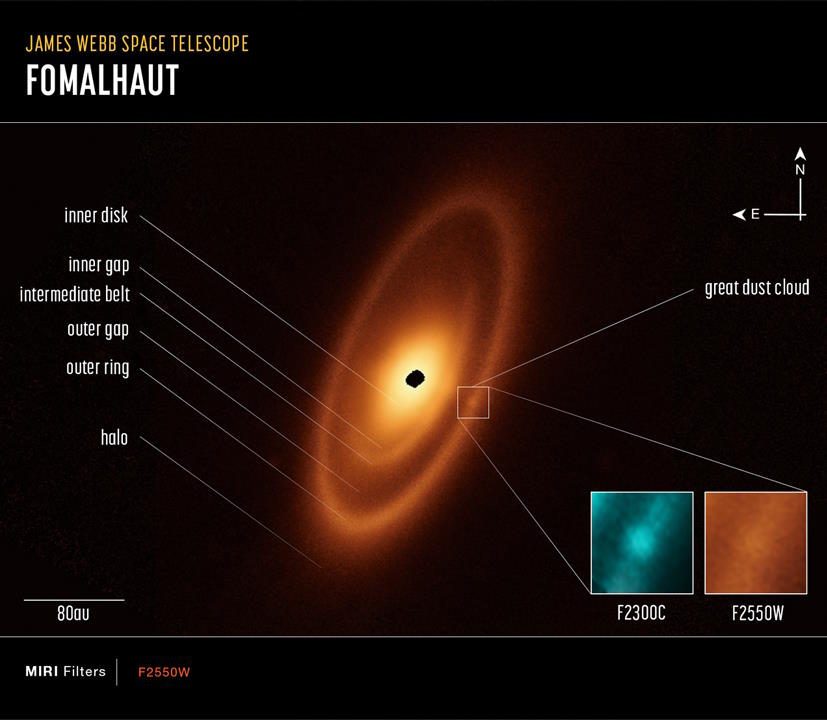
This image of the dusty debris disk surrounding the young star Fomalhaut is from Webb’s Mid-Infrared Instrument (MIRI). It reveals three nested belts extending out to 14 billion miles (23 billion kilometers) from the star. The inner belts – which had never been seen before – were revealed by Webb for the first time. Labels at left indicate the individual features. At right, a great dust cloud is highlighted and pullouts show it in two infrared wavelengths: 23 and 25.5 microns.
Distance records were shattered, both for individual galaxies,
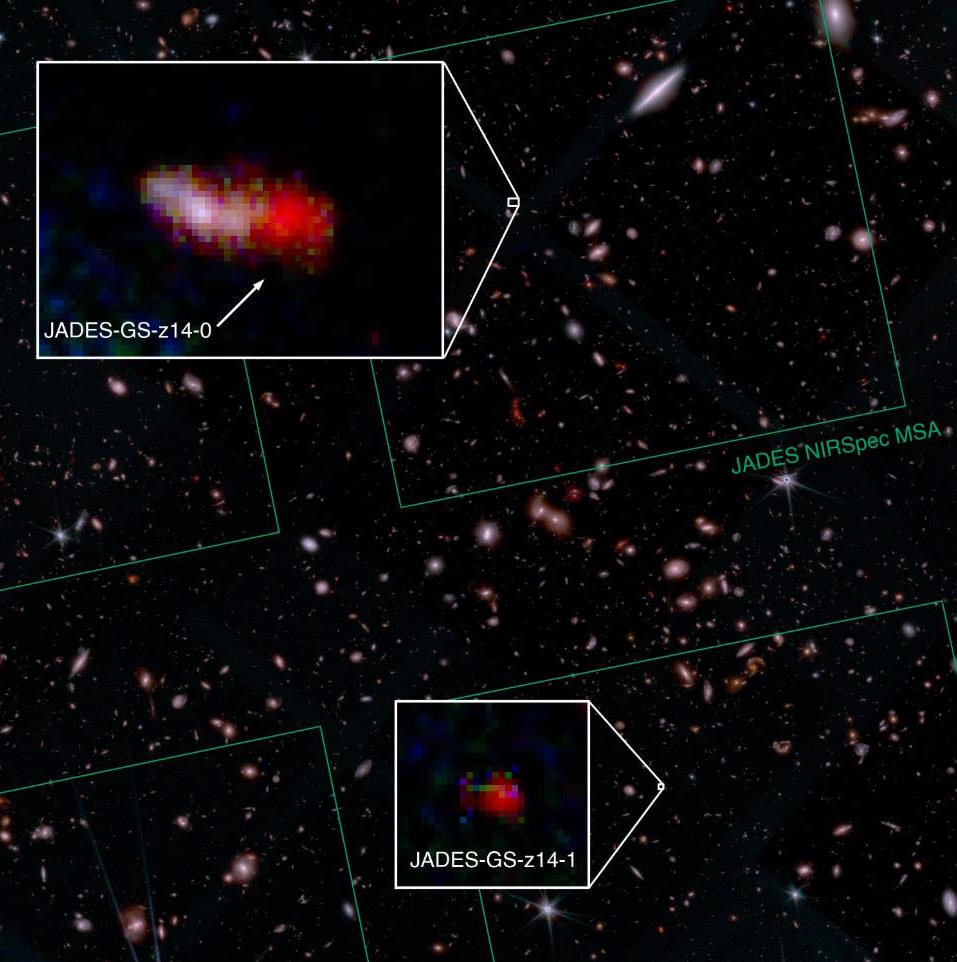
JADES-GS-z14-0, in the top inset box, is found behind (and just to the right of) a closer, brighter, bluer galaxy. It was only through the power of spectroscopy with incredible resolution, capable of separating the two sources, that the nature of this record-breakingly distant object could be determined. Its light comes to us from when the Universe was only 290 million years old: just 2.1% of its current age.
as well as the earliest galaxy clusters.
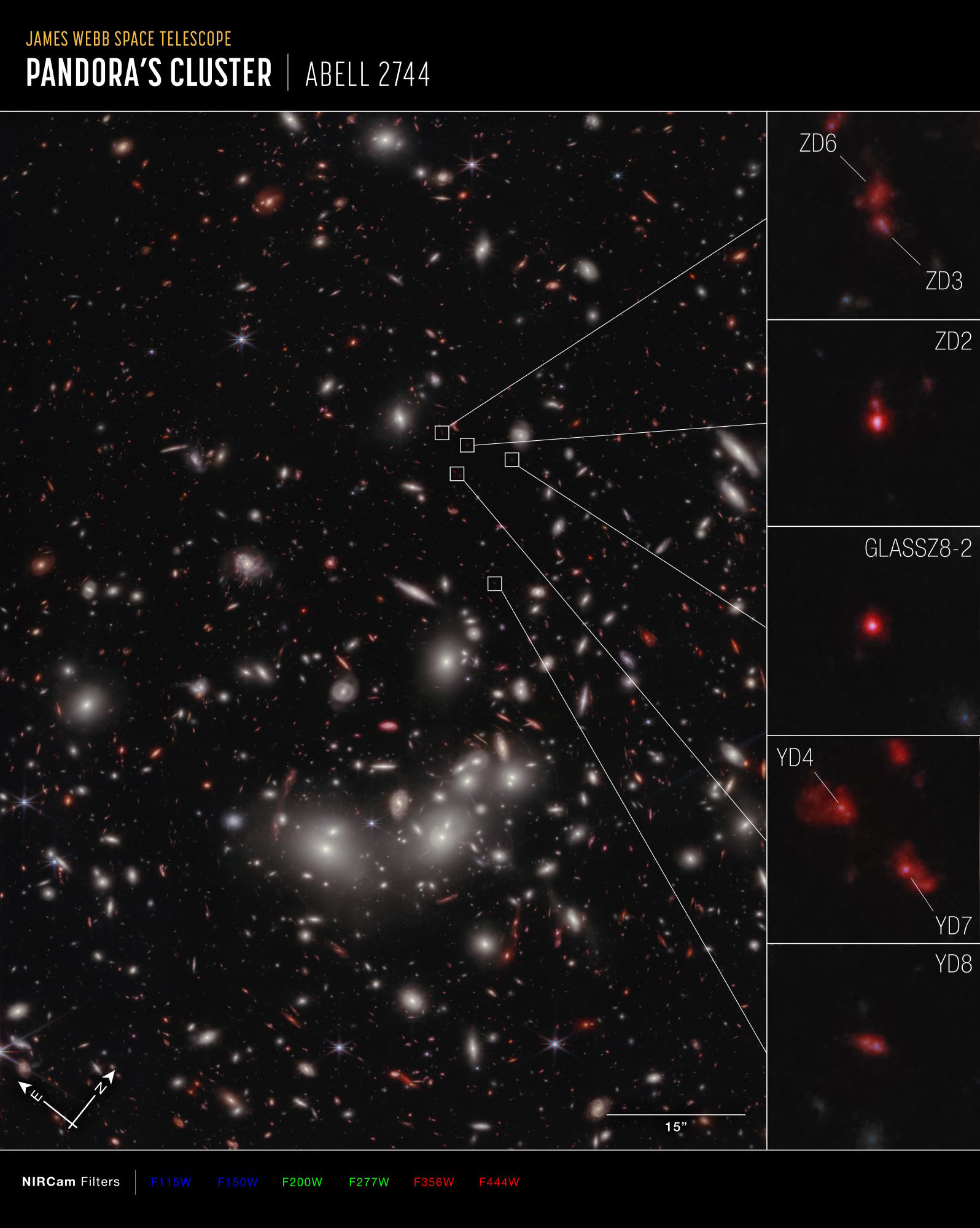
The galaxies that are members of the identified proto-cluster A2744z7p9OD are shown here, outlined atop their positions in the JWST view of galaxy cluster Abell 2744. At just 650 million years after the Big Bang, it’s the oldest proto-cluster of galaxies ever identified. This is early, but is consistent with simulations of when the earliest proto-clusters should emerge from the most initially overdense regions.
But spectacular features also emerged within interacting galaxies.
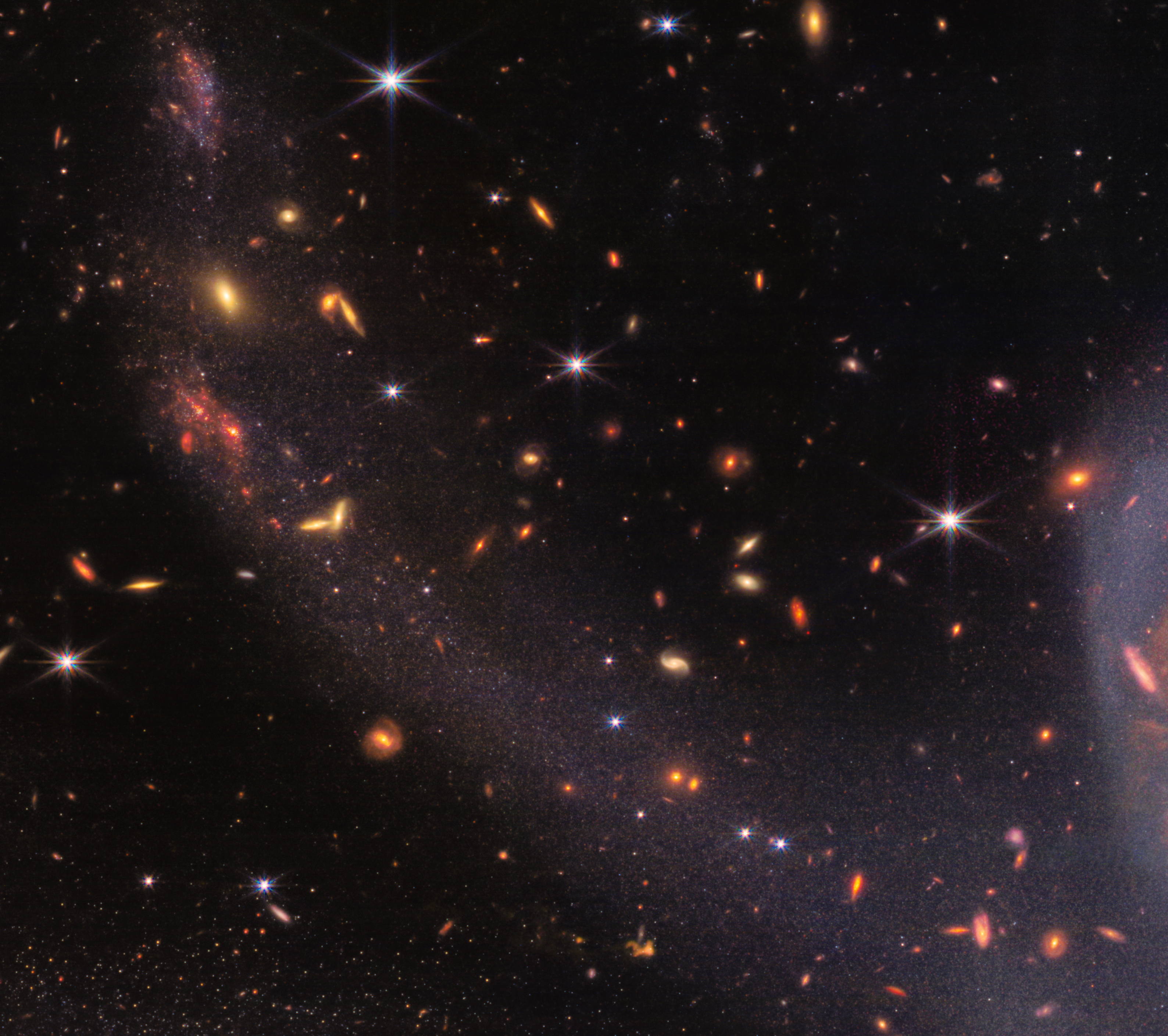
The stellar streams being ripped from one of the interacting member galaxies of Stephan’s Quintet glitters in this image, while background galaxies shine from much farther away. The new stars that form may not remain gravitationally bound and undisturbed for long, but for as long as they persist, will form collections of stars (or galaxies) that have no dark matter within them at all.
With near-infrared NIRCam and mid-infrared MIRI views, optically invisible features shone brilliantly.
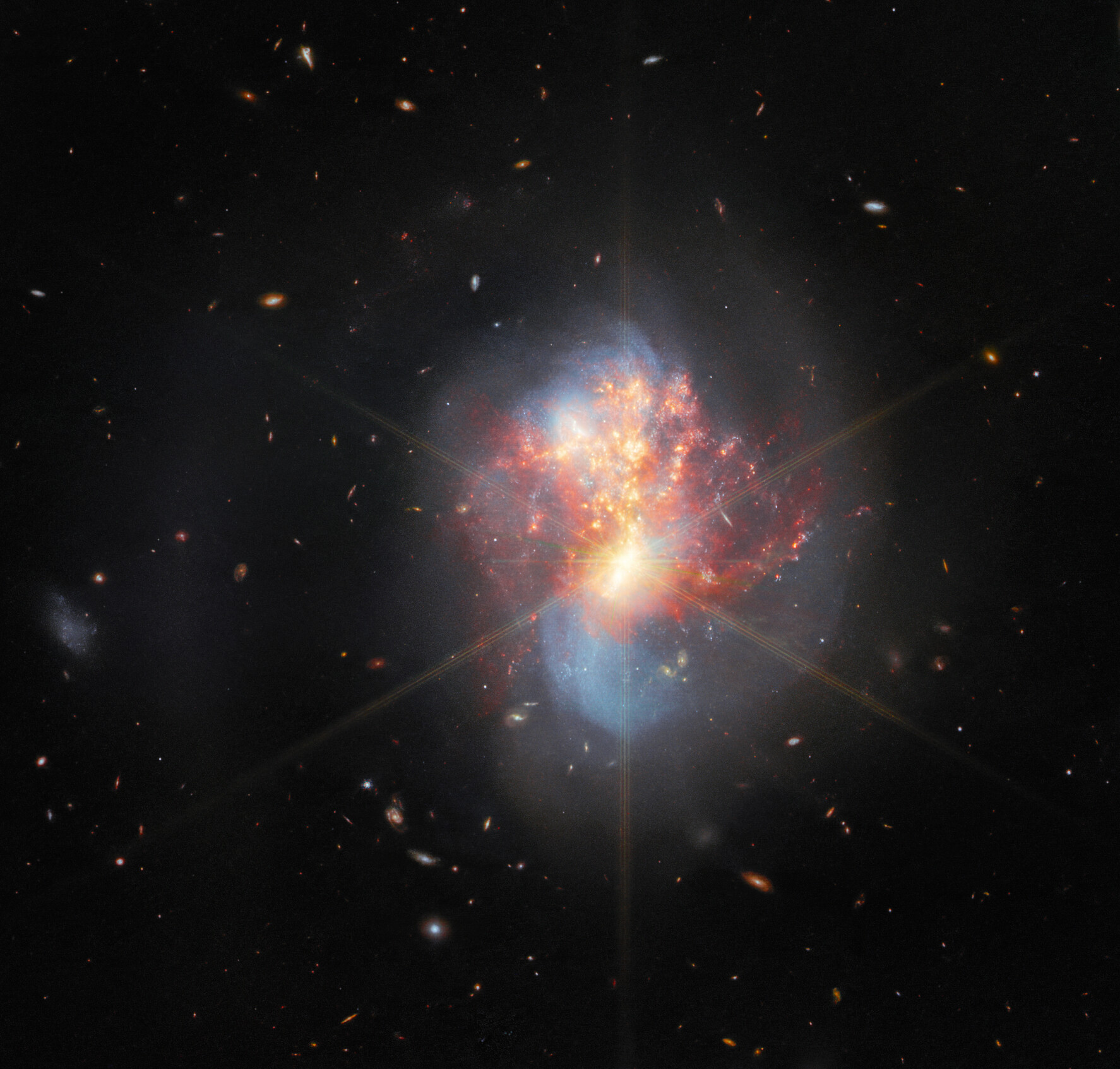
The pair of interacting galaxies in the process of a merger, known as IC 1623, is imaged here by JWST. Data from a trio of JWST’s instruments, MIRI, NIRSpec, and NIRCam, were used in the construction of this image. The ongoing starburst at the center produces intense infrared emissions.
Previously, the galactic pair Arp 142 — the Penguin and the Egg — was viewed by Hubble.
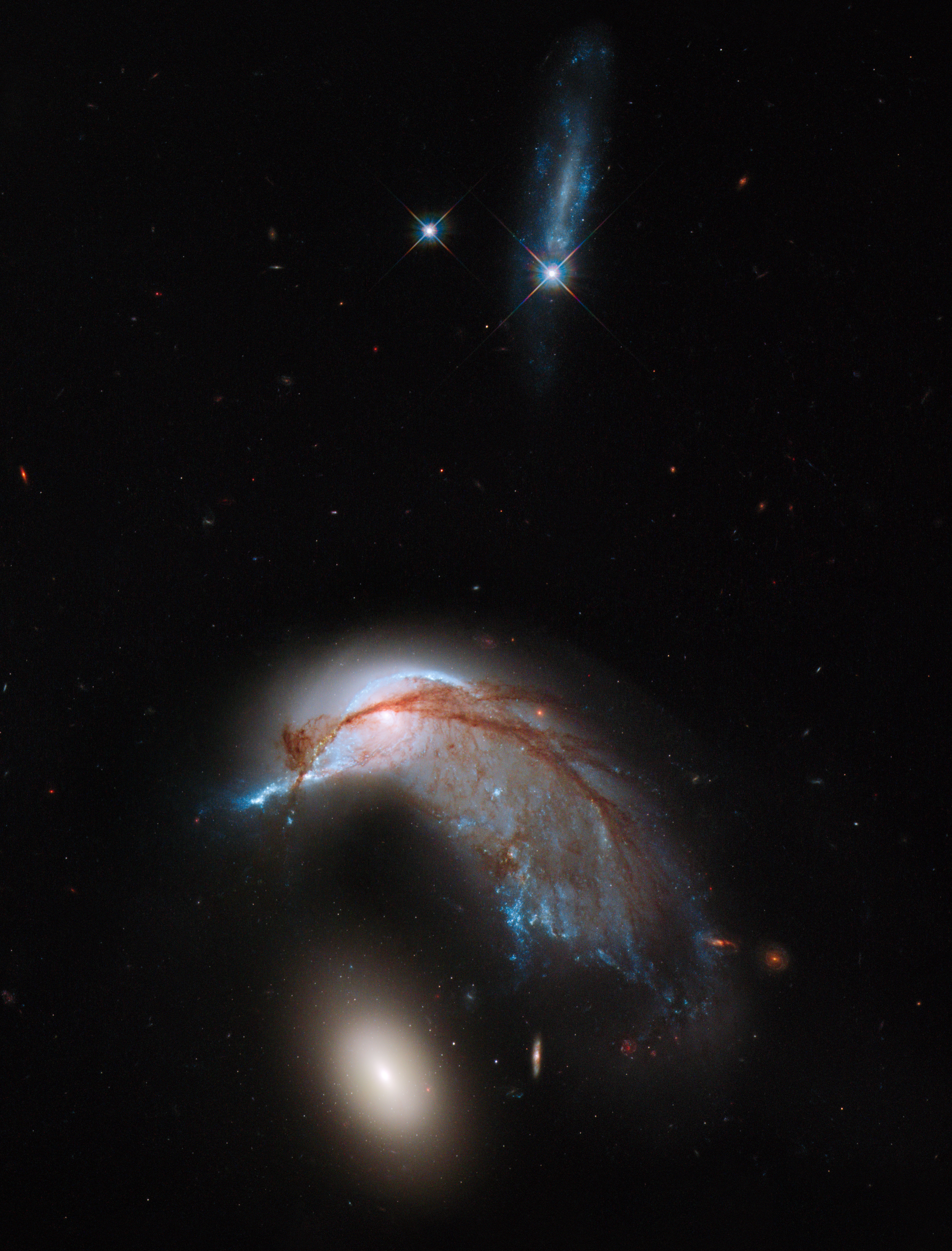
This interacting pair of galaxies, cataloged as Arp 142, was dubbed “the Penguin and the Egg” after the Hubble Space Telescope revealed this view of the two member galaxies: the extended NGC 2936 and the compact NGC 2937.
To celebrate its second anniversary, JWST released a NIRCam image,
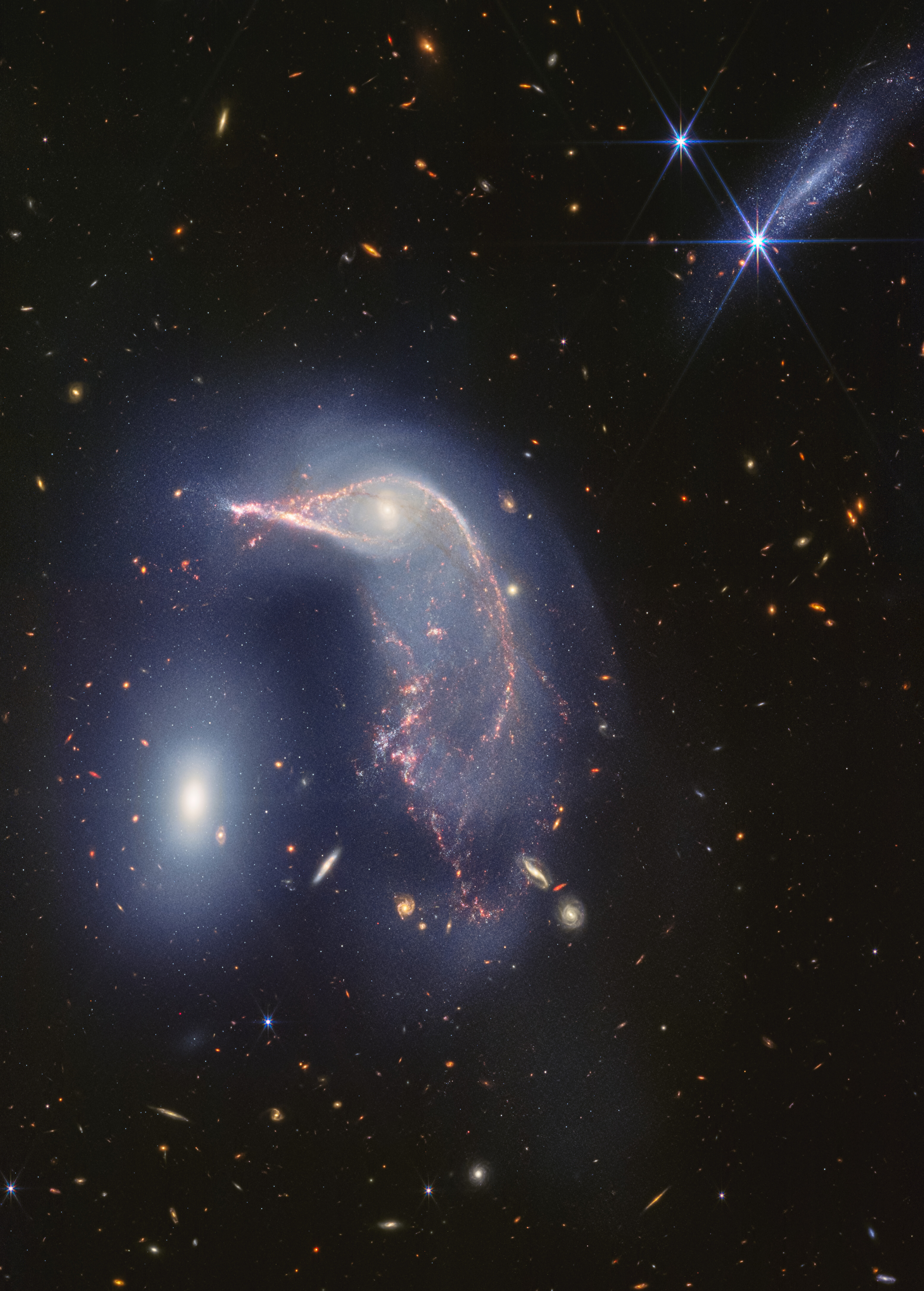
This NIRCam view of the Penguin and the Egg displays a smoke-like appearance, while the “eye” of the Penguin shines brilliantly: corresponding to the center of what was, up until perhaps 75 million years ago, just a normal-appearing spiral galaxy. The gravitational encounter with the “Egg” galaxy has distorted and distended the less massive spiral galaxy into the shape now seen here.
a MIRI image,
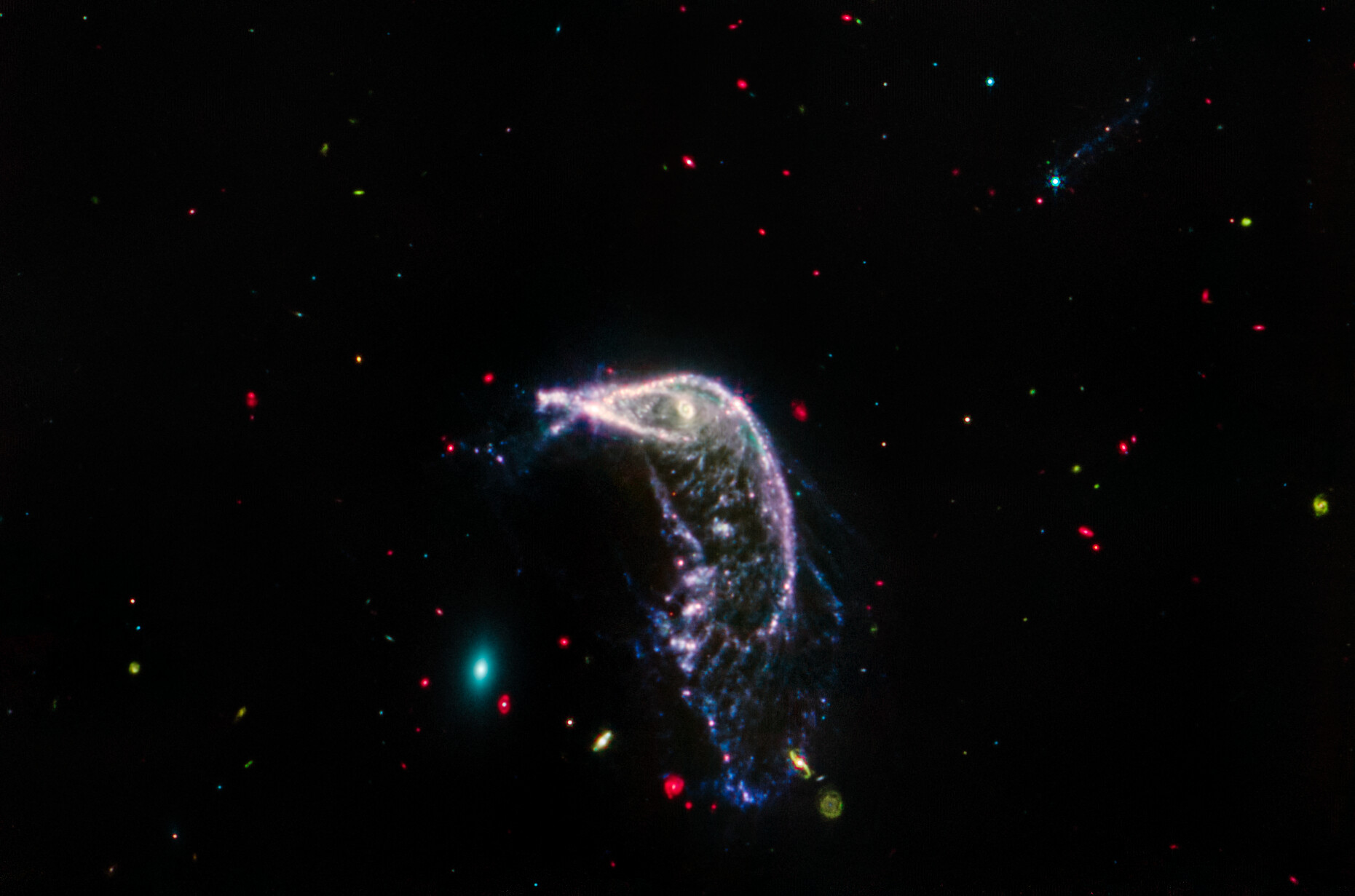
In mid-infrared light, the Penguin looks more like a seahorse, with cool dust dominating the galaxy’s appearance, while the Egg appears smaller and more compact: illuminated largely by the cooler, older stars present within it. At much longer wavelengths than the NIRCam image, MIRI’s resolution is much lower, but still reveals spectacularly sharp features.
and also a composite image of this galactic encounter, occurring 326 million light-years away.
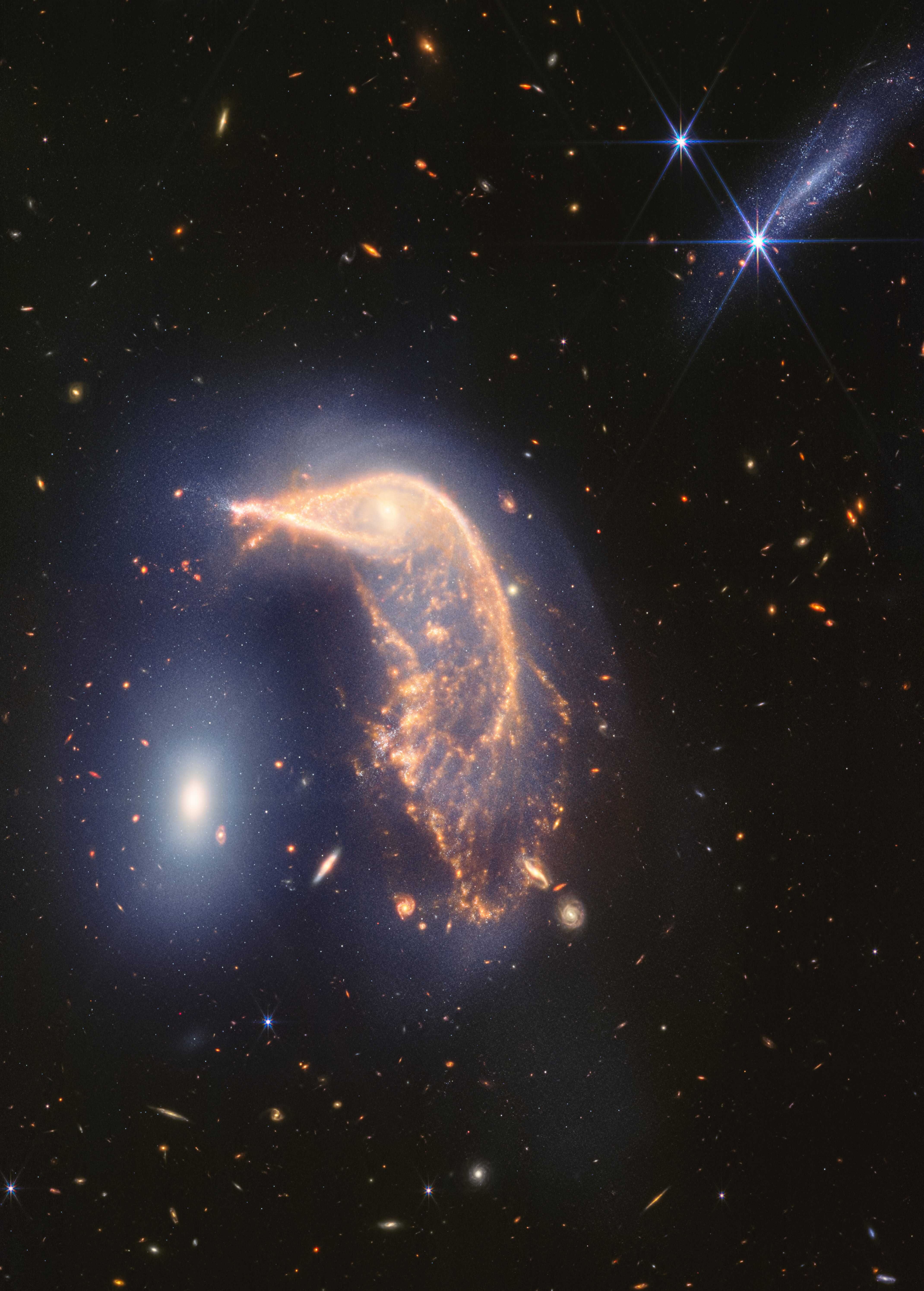
In this composite image, NIRCam and MIRI data are combined together to produce this image, which is more detail-rich than either the NIRCam or MIRI images on their own. While both MIRI and NIRCam features are clearly present throughout the Penguin, only the central core of the Egg has a MIRI contribution.
The larger galaxy, the Penguin, exhibits severely extended features: knotted gas, which triggers new star-forming episodes.
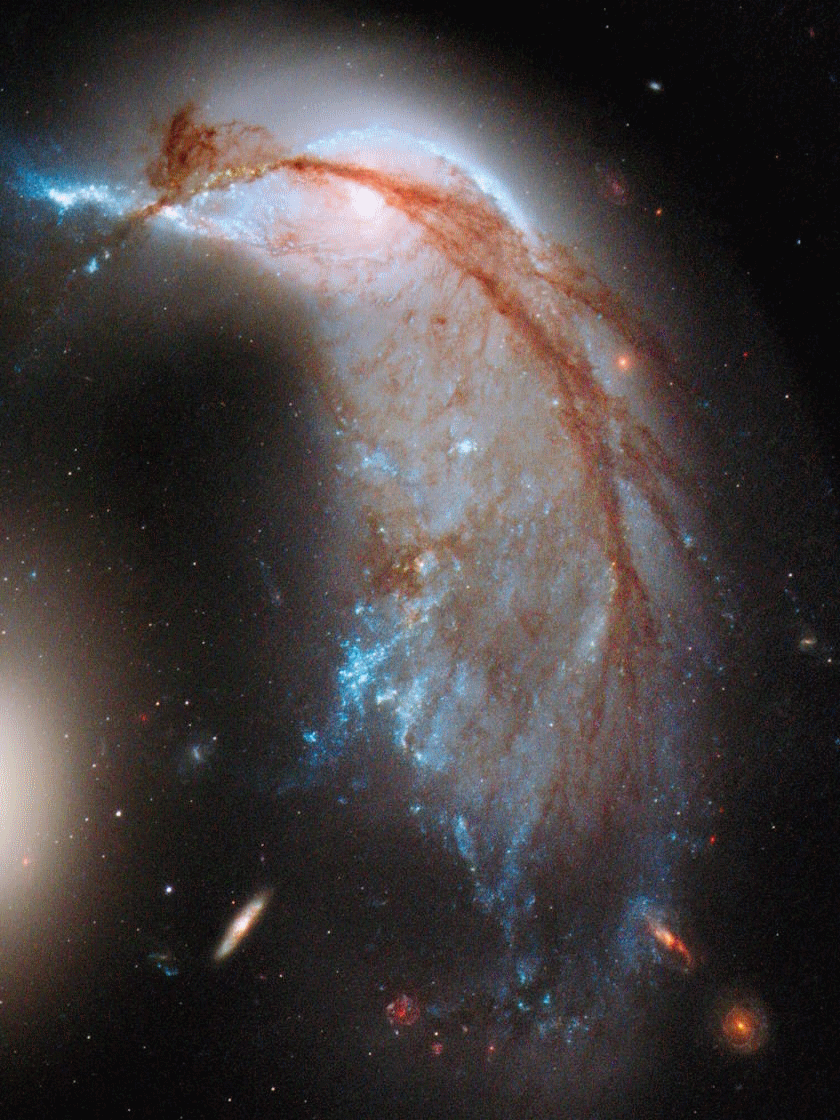
This three-panel animation shows Hubble (visible light), NIRCam (near-infrared light), and NIRCam+MIRI composite (all JWST light) images superimposed atop one another, highlighting the various features present within the Penguin component of Arp 142.
The Egg, meanwhile, is relatively undisturbed: a more massive, compact elliptical galaxy, with very little gas remaining.
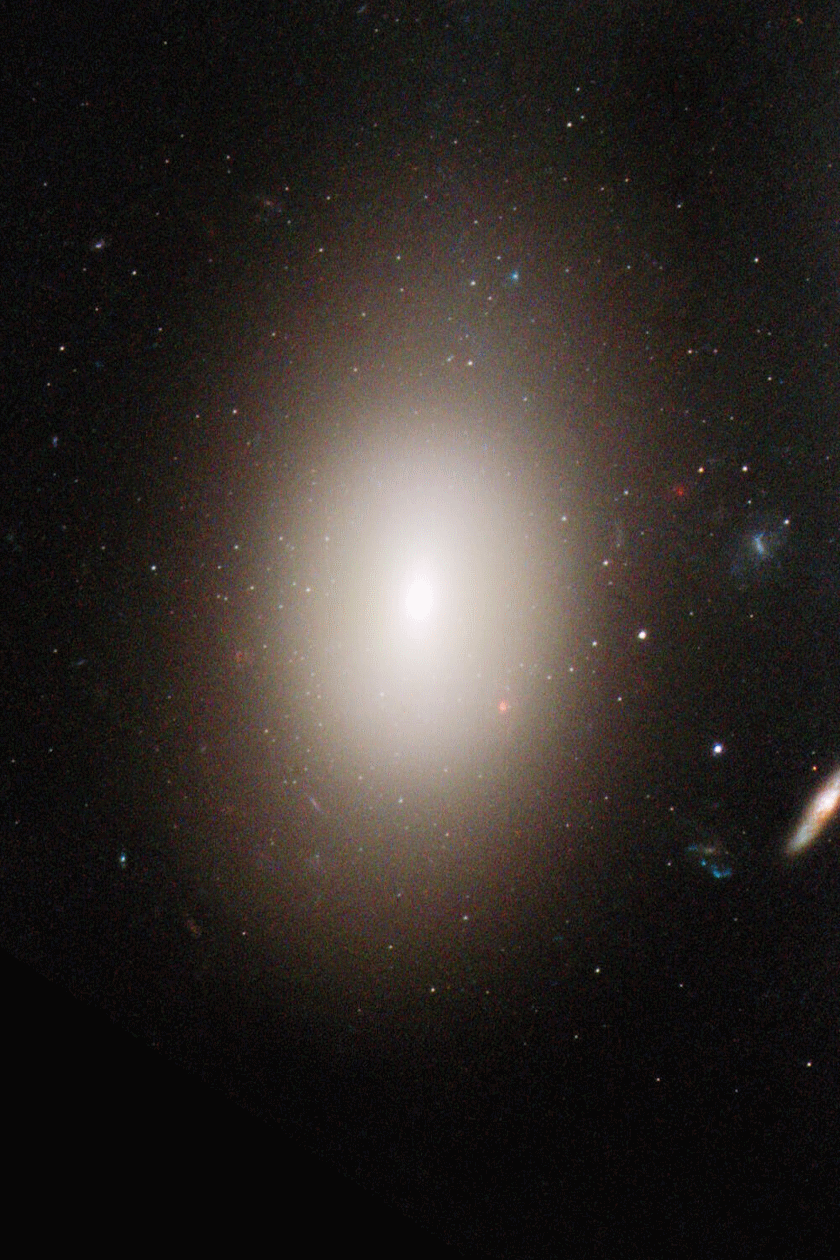
This three-panel animation shows Hubble (visible light), NIRCam (near-infrared light), and NIRCam+MIRI composite (all JWST light) images superimposed atop one another, highlighting the various features present within the Egg component of Arp 142. Note how only background galaxies and the absolute center of the Egg are impacted by MIRI’s imagery.
Nearby, the edge-on galaxy PGC 1237172 lies 100 million light-years closer: dust-poor and nearly invisible to MIRI.
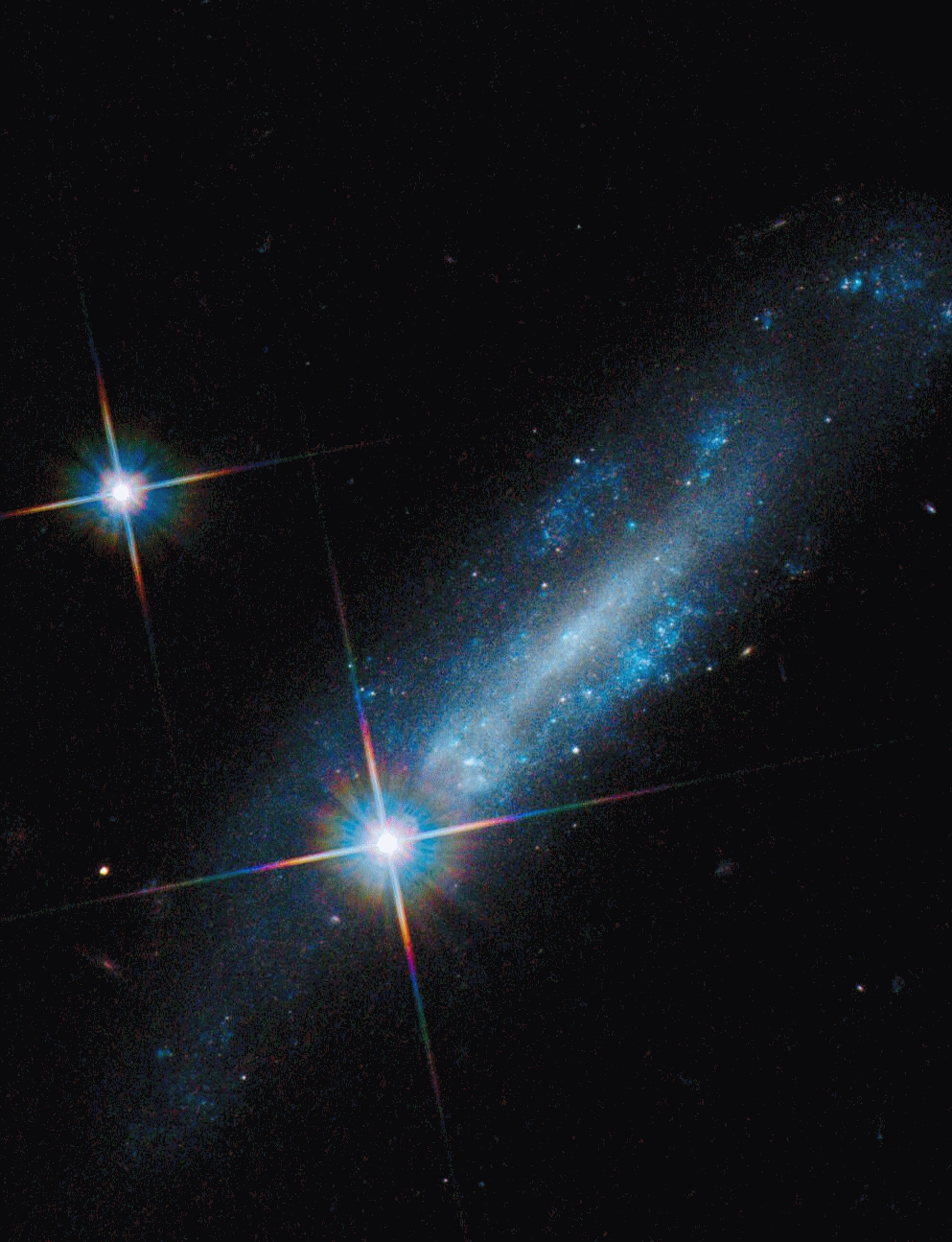
This three-panel animation shows Hubble (visible light), NIRCam (near-infrared light), and NIRCam+MIRI composite (all JWST light) images superimposed atop one another, highlighting the various features present within the edge-on galaxy PGC 1237172. The galaxy itself is nearly invisible to MIRI’s eyes.
The Penguin, once a spiral, stretches out into a seahorse-like appearance in infrared light.
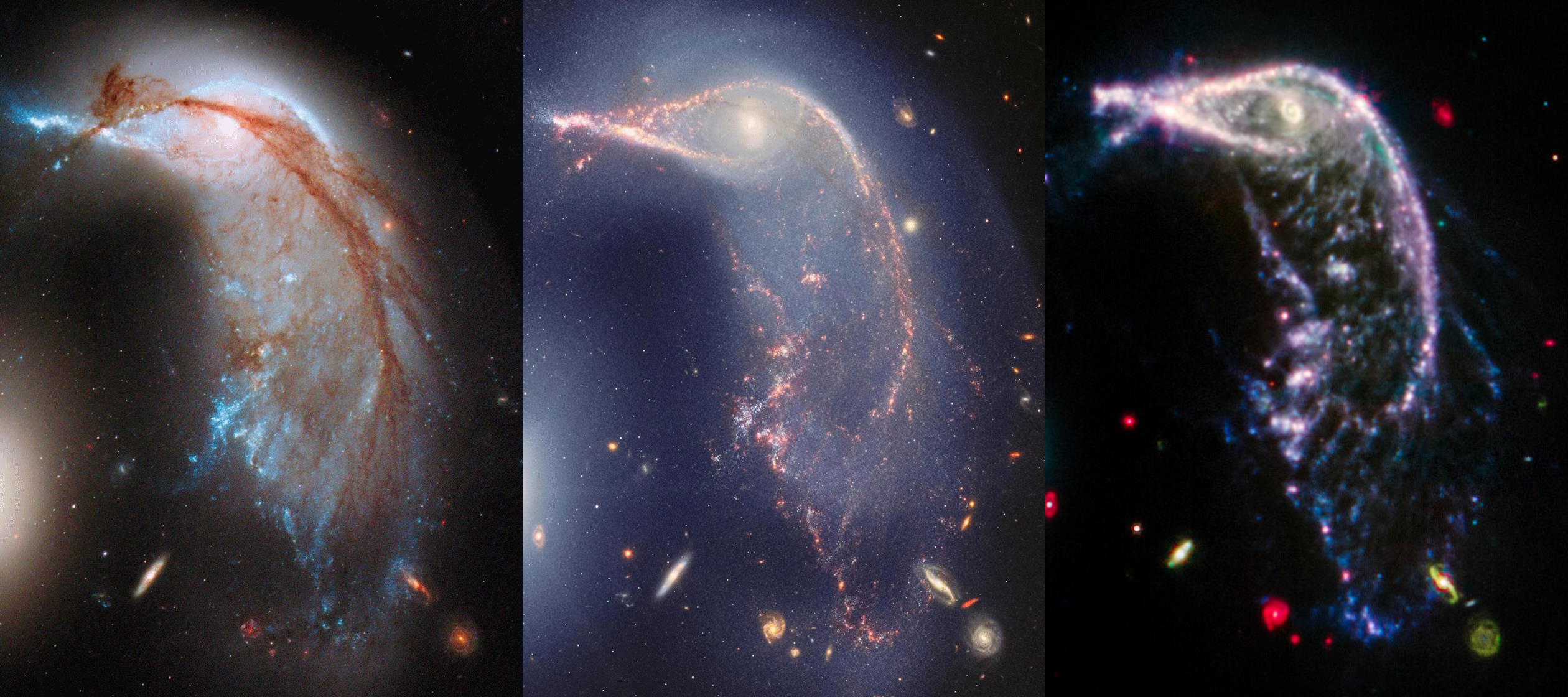
These three views show the visible light (left), near-infrared (middle), and mid-infrared (right) views of the Penguin galaxy that’s part of Arp 142. The galaxy takes on a seahorse-like appearance in mid-infrared light, as polycyclic aromatic hydrocarbons, old, cool stars, and cold dust are highlighted.
The smoke-like appearance reveals polycyclic aromatic hydrocarbons: complex organic molecules that may be life’s precursors.
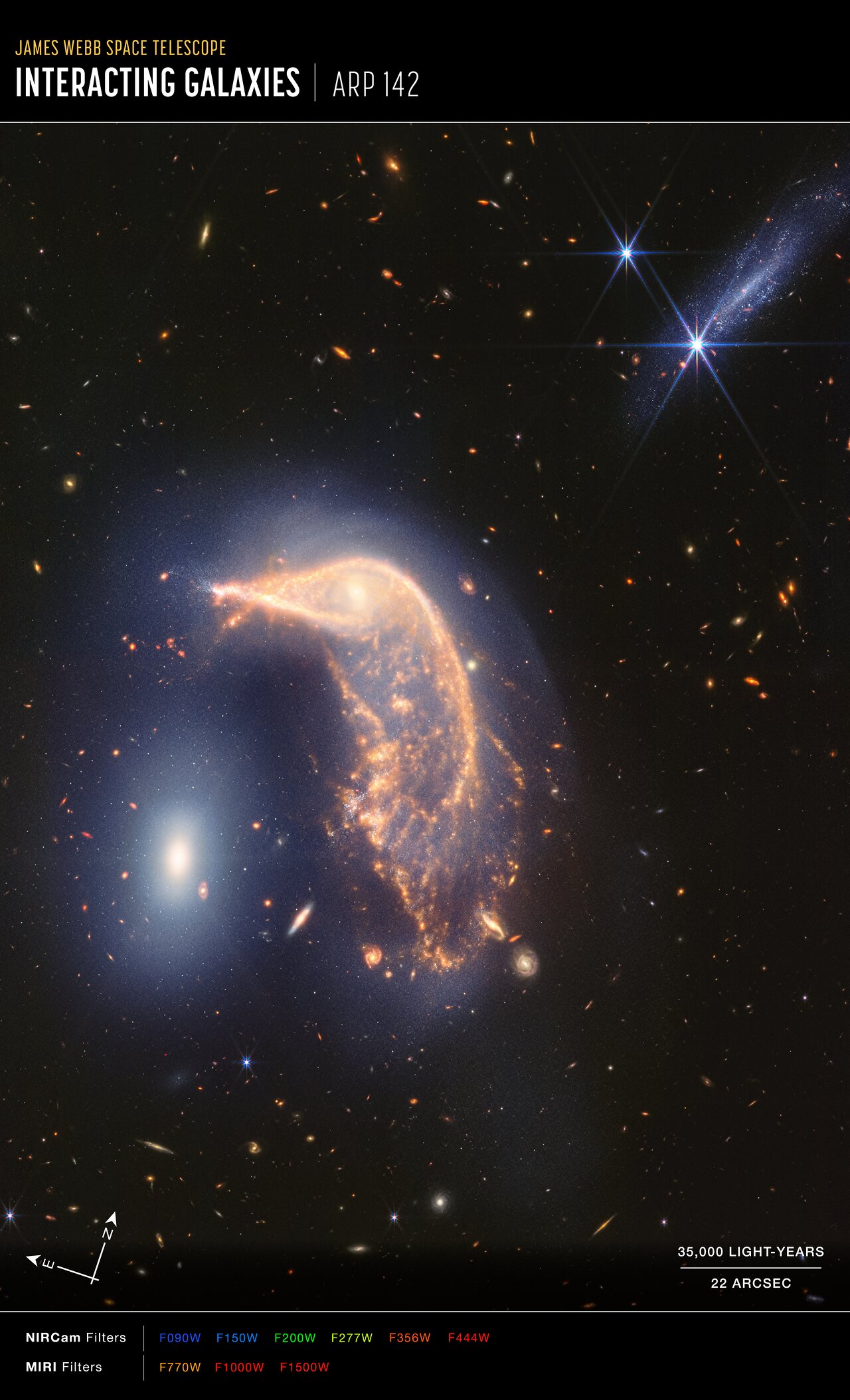
This annotated composite view from JWST shows both NIRCam and MIRI data together, highlighting the longer-wavelength features in redder colors and the shorter-wavelength ones in bluer colors. The Penguin, in particular, exhibits a great diversity of gaseous and stellar features, showcasing just how severely it is being disrupted by this gravitational encounter.
Eventually, and ironically, the Egg will subsume the Penguin.
Mostly Mute Monday tells an astronomical story in images, visuals, and no more than 200 words.
In this article
https://news.google.com/rss/articles/CBMiQmh0dHBzOi8vYmlndGhpbmsuY29tL3N0YXJ0cy13aXRoLWEtYmFuZy9pbnRlcmFjdGluZy1nYWxheGllcy1qd3N0L9IBAA?oc=5
2024-07-15 06:00:00Z
CBMiQmh0dHBzOi8vYmlndGhpbmsuY29tL3N0YXJ0cy13aXRoLWEtYmFuZy9pbnRlcmFjdGluZy1nYWxheGllcy1qd3N0L9IBAA
Tidak ada komentar:
Posting Komentar